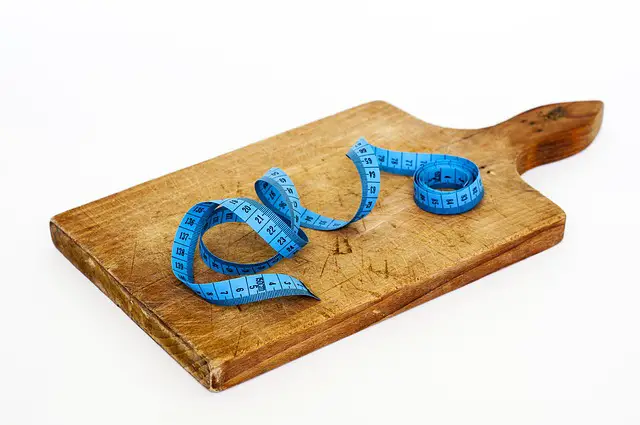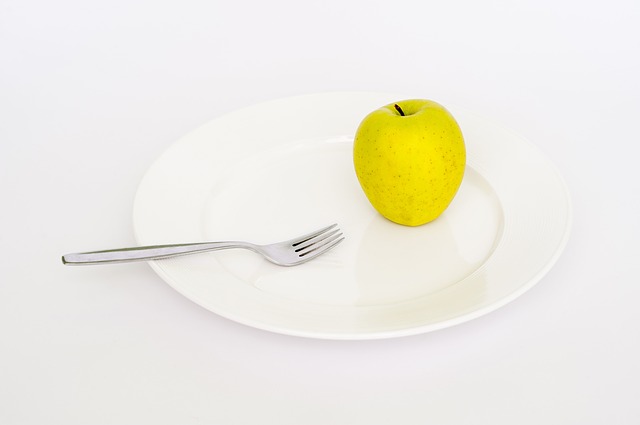Intermittent fasting is becoming an increasingly popular topic among health and fitness fanatics as well as those looking to get in better shape or improve their health.
However, many people may not realize that fasting has been around for many years.
The History of Fasting
Not only is it used as part of religious culture such as Ramadan but it has played a huge part in human dietary history going all the way back to when we were hunter-gatherers.
Often the first part of the day was often spent fasting while we hunted wild meats and forage for nuts, seeds, fruit and vegetables which we would take back to our camp and use later on.
This allowed us to make the best use of the lighter hours of the day to then feast in the darker hours which came later on.
It was dangerous to go out in the dark due to the amount of predators and the impaired vision so we would stay around the camp and gorge ourselves on the whatever we had found during the day.
Any type of morning breakfast would be from last night’s leftovers if you were lucky enough to have found enough food the day before.
As we now know, this structure of eating can deliver many health benefits and many experts believe it to greatly help in the venture for good health, low body fat and substantial muscle mass.
This is contrary to the traditional belief that breakfast is the most important meal of the day. You may have even heard of things such as;
“Eat breakfast like a king, lunch like a prince and dinner like a pauper”
Yet, the name breakfast in itself simply means to break the fast and so this meal does not need to be restricted to the early hours of the day.
John Harvey Kellogg brought the morning meal to the masses in the early 20th century when he accidentally created cornflakes by leaving out some boiled maize which turned stale.
As nations merged and became more diverse from the first and second world war, the American toaster, sliced bread, pre-sugared cereals and instant coffee spread over the lands and turned breakfast into the event we know it to be now.
The Romans were great believers in consuming a single meal around noon and nothing else for the rest of the day.
Once this great feast had finished they would fast until noon the following day.. and we’re talking about a nation obsessed with digestion and gut health.
Now you can see that breakfast may not be the hyped up meal that it is touted to be.
I’m going to explain to you the types of fasting structures you can follow as well as the benefits you can see with a few helpful hints to get you by the food-less hours.
What Happens When You Fast & What Are The Benefits of Intermittent Fasting?

There are two states that your body can be in; fed and fasted.
In the fed state your body is digesting food, absorbing the nutrients and creating and storing energy from fats and carbohydrates.
This then turns your hormones into what is known as an ‘anabolic’ state. This means that it is creating and building molecules opposed to catabolic, which is when it is breaking down molecules for energy or other uses.
Due to the hormonal response from eating while you are in a fed state it is very hard for you to stimulate any type of substantial fat loss.
When this period ends you go into the post-absorptive state which is when your body is not digesting or absorbing any foods.
Depending on the content of your last meal, this can last anywhere from 8 – 12 hours. Once this time has ended, this is when you enter “the fasted state.”
The fasted state turns you catabolic, meaning that your body is forced to break down molecules for metabolism, such as fat.
Some people even find that they can eat more than they normally would after starting intermittent fasting simply as they have extended this ‘fat burning window’ which is a major benefit.
Another benefit is that you do not have to worry about eating food as frequently. Normally the fasting portion of the day for people is the morning, and so opening up your morning to focus on things like work, business and whatever tasks you need to complete for the day.
Otherwise, you have to leave a part of this time for eating breakfast and lunch so you can be an hour out of your routine.
There is also a feeling of mental clarity or alertness that comes with fasting which makes it perfect to pair with the busiest time of the day.
Many people believe that this goes back to our cavemen ancestors as they would be out hunting and in dangerous situations when they fasted, always needing to be on the look out for food or predators. If we let our mind slip then we may not eat that night and starve.

Due to this, you will also appreciate the experience of eating much more… After going so long without food you realize how great eating can really be.
In the modern world people are constantly grazing on snacks such as crisps, nuts and chocolate bars and so they’re never really hungry when they sit down at meals. It also makes them feel lethargic throughout the day.
Once you’ve gone for 16 hours without eating your next meal is a real event where you can realize the joy of different foods.
It also makes you feel much more satiated after your meal as your body is now more efficient at using fats for fuel and so does not need the constant intake of food.
This lets your body know how much energy it actually already has stored.
There are strong links to intermittent fasting improving longevity also. Caloric restriction, in general, has long been praised for its long-term health benefits, so having periods of caloric restriction (fasting) daily can really boost these benefits.
During a period of caloric restriction, your body must find a way to extend your life, otherwise, you will just die from the lack of energy, and it does this by making your metabolism more efficient.
Studies have shown this to reduce the rate of aging, and simply reducing caloric consumption by 30-40% can increase your lifespan by a third or even more! This studies have shown it to have links to a reduced cancer risk, increased cure rates and decreased moralities.
6 Types of Fasting
1. 5:2 – This method is not really a fast and more of an overeating and under-eating phase. You can eat whatever you like 5 days of the week and then for 2 days of the week you’re restricted to 500 calories which would be the catabolic phase.
Considering the recommendation is 2000 calories per day for women and 2500 calories per day for men, these two days, which are normally at the weekend, are not fun at all. This style of eating was created by a British man named Michael Moseley in a BBC documentary where he researched the benefits of fasting and tested the different methods.
2. The Lean Gains Method – This is also known as 16/8 due to the fasting/feeding windows. It is a method popularized by Martin Berkhan on his site ‘Lean Gains’.
You fast for 16 hours and then have an eating window of 8 hours.
This is probably the most popular style of fasting and the definitely the easiest to complete.
Normally you would stop eating at 10pm and then start eating again at 2pm but the eating/fasting period can be altered according to your lifestyle.
The added benefit of this is that you fast every day which makes it easier to stick to due to the daily feasts and a lot of well-known practitioners believe that this is the method where you get the most amount of benefits.
3. Eat. Stop. Eat. – This is a more serious fasting method put forward by a man named Brad Pilon in his book by the same name.
You consume twice the amount of calories you normally would in a single day and then eat nothing at all the next day.
This can be extremely difficult for your mentality. However, you do only fast once or twice per week.
4. Juice Fasting – Juice fasting is a term that is thrown around a lot and people believe that it is a form of fasting when it really is not. Fasting involves going a prolonged period of time without consuming anything that has energy.
When you go on a ‘juice fast’ you simply consume juice instead of food which does have calories in it. I would not recommend a juice fast to anyone as it is extremely low in protein, fat, and fiber.
As well as this, a lot of the beneficial nutrients in fruits and vegetables come from the skin and pulp which are thrown away on a juice fast so you’re not even getting the whole spectrum of nutrition.
5. The Warrior Diet – This method is based on a book that really opened people’s eyes to fasting and brought the idea of daily fasts to the forefront.
The idea is that you under-eat on calories during the day by snacking on suggested items such as a few nuts, maybe a boiled egg, whey protein or raw veggies which lead you to eat your largest meal at night.
This night time meal says that you can eat as much as you want until you are full. There is a recommended order in which you eat food as well; starting with vegetables, then on to proteins, then carbohydrates and fats.
The idea is that you know that you are full once you are more thirsty than hungry. You are told not to drink water throughout the meal or beforehand for this reason, too.
This type of fasting can be great if you live a hectic lifestyle during the day as you do not have to think about food. Then, when you get home to relax, you can enjoy a huge feast and go to be satisfied.
6. Fat Loss Forever/Engineering The Alpha – Both of these titles are books centered around fat loss, muscle growth and body composition.
The idea is that you have a ‘cheat day’ on the Saturday or Sunday when you’re out with friends or family or at an event.
This allows you to indulge in the festivities and not think about your diet. The following day you do not consume anything at all and the day after that you fast until noon. In total, this creates about a 36 hour fasting window after a 24 hour fasting window.
As you can probably tell, this 24 hour feast can be fantastic as the prescription is to literally eat anything you want and as much of it as you want. However, the following 36 hour fasting window can be very tough.
If you are to pick this method I would recommend that you have your fasting window on a very busy work day where you can preoccupy your mind.
Fasting Myths
- Fasting will turn the body into “starvation mode” – Starvation mode is a simpler term for a reduction in resting metabolic rate.
If you have a lower metabolism than you need to eat less in order to gain fat. In actuality, the earliest evidence for lowered metabolic rate due to fasting occurred after a 60 hour fast and resulted in a -8% resting metabolic rate.
Most other studies show that metabolic rate is actually not affected until 72-96 hours has passed. In fact, short-term fasting can increase the metabolic rate from 3.6% – 10% after 36-48 hours.(study)
- Fasting Causes Muscle Loss – People believe that in order to stop muscle wastage they need a constant supply of protein or amino acids which are not true.
In actuality, protein is absorbed into the body at a very slow rate so there are several following hours where protein and amino acids are going into your blood stream.
Therefore, for most people, eating one or two large high protein meals will be enough for them to stop muscle catabolism. As long as you’re getting between 0.8-1g of protein per pound of bodyweight each day then your lean mass will be perfectly fine.
- Breakfast Is The Most Important Meal Of The Day So Do Not Skip It – As I have already stated, breakfast is not the meal at the beginning of the day. Instead, it is just the meal that you use to break your fast which can come at any time of the day.
Going throughout the morning without breakfast will not make you fat unless you then consume even more food than you normally would in the feasting window.
Overall caloric amount determines body composition so if you consume more than your body can use then that’s what will make you fat, not the missed meal.
- Training When Fasted Is Awful – Unless you’re an elite athlete and your body is reliant upon a fixed workout and eating schedule then training when fasted can actually be very beneficial.
Remember, fasting improves mental alertness and so you will have more focus within the workouts. Strength is mostly a mental game so if your head is not in the right place then you will not be as strong.
If you keep thinking that trainin,g when fasted, will make you weak then your strength will be reduced because believe it will be.
However, if you realize that you have enough energy from the food you ate the day prior and also implement some fasting tips then you will most likely experience an increase in your strength.
3 Tips For Fasting
1. Black Coffee – Coffee contains caffeine which provides energy to the body.
Restricting your caffeine consumption to the fasting portion of the day will enhance the mental alertness that comes with fasting and also gives you lots of energy.
You have to keep it black, however, as adding milk or sugar will then be adding calories and you’ll no longer be in a fast.
Some people do say that anything below 50kcal in the fasting window is allowed, though, so if you do need a splash of milk then try to keep it below this amount.
Some other caffeinated beverages are yerba mate, black tea, green tea, white tea and matcha tea.
2. Sparkling Water – Sparkling water gives the impression that you’re having an exciting drink and yet the only difference between this and normal water is the added carbon to make it bubbly.
If you add a squeeze of lemon or lime to this then the drink becomes almost like a healthy lemonade. This is a great trick if you don’t like drinking normal water.
3. BCAAs – If you’re going to workout in the fasted period of the day then I would recommend taking 5 – 10g of BCAAs pre-workout. BCAAs are branched chain amino acids (types of proteins) and specifically contain valine, isoleucine, and leucine.
Isoleucine has been shown to increase the glucose uptake within your muscles where leucine has been shown to increase muscle protein synthesis i.e. the creation of muscle.
Taking these pre-workout can stop the potential catabolic affects training can have on the muscle and therefore reduce the amount of muscle wastage from training fasted.
BCAAs also have a stimulatory effect on some people similar to that of caffeine. Pairing a scoop of BCAAs with a black coffee before hitting your workout can be a powerful performance enhancing combination.
I’d also recommend always purchasing the flavored BCAAs powder as the unflavoured powders taste absolutely awful and many people find them hard to swallow.
Conclusion
Overall, fasting can be a very beneficial way to reduce your calories for a portion of the day and so makes it easier to lose fat.(study)
People often complain about the lack of food and excitement when they are dieting but these methods allow for you indulge in massive feasts every day.
As long as you are mindful of a number of calories or food you are eating then intermittent fasting can be very beneficial for lean muscle gain or fat loss.(study)
You may want to be slightly wary if you are female as women tend to not respond to fasting as well as males do as it can increase cortisol levels and therefore be more stressful.
Pick a method that best suits you, adapt it to suit your lifestyle and put it into practice for a week. At the end of the week, you can keep what works and chuck out anything you did not like.
Always tailor it towards your goals and you specifically as a person as you know yourself better than anyone.
Researches and references
https://en.wikipedia.org/wiki/Fasting
https://en.wikipedia.org/wiki/Breakfast
https://en.wikipedia.org/wiki/John_Harvey_Kellogg
http://www.bbc.co.uk/news/magazine-20243692
http://www.fitday.com/fitness-articles/fitness/body-building/what-is-an-anabolic-state.html
https://en.wikipedia.org/wiki/Michael_Mosley_%28broadcaster%29
http://www.leangains.com/p/bio.html
https://en.wikipedia.org/wiki/Juice_fasting
https://en.wikipedia.org/wiki/Warrior_diet
http://www.ncbi.nlm.nih.gov/pubmed/3661473
http://www.ncbi.nlm.nih.gov/pubmed/2405717
https://www.boundless.com/physiology/textbooks/boundless-anatomy-and-physiology-textbook/nutrition-metabolism-and-temperature-regulation-24/metabolic-body-states-232/postabsorptive-state-1153-5274/
http://ajcn.nutrition.org/content/81/1/69.short
http://tuftsjournal.tufts.edu/2009/03_2/professor/01/
https://en.wikipedia.org/wiki/Branched-chain_amino_acid
“http://authoritynutrition.com/starvation-mode/”
http://sportsci.org/jour/9901/rbk.html
http://ajcn.nutrition.org/content/90/5/1138
http://press.endocrine.org/doi/pdf/10.1210/jcem.82.11.4376
www.sciencedirect.com/science/article/pii/S0104423013000213
Leave Feedback: Was this article helpful?

